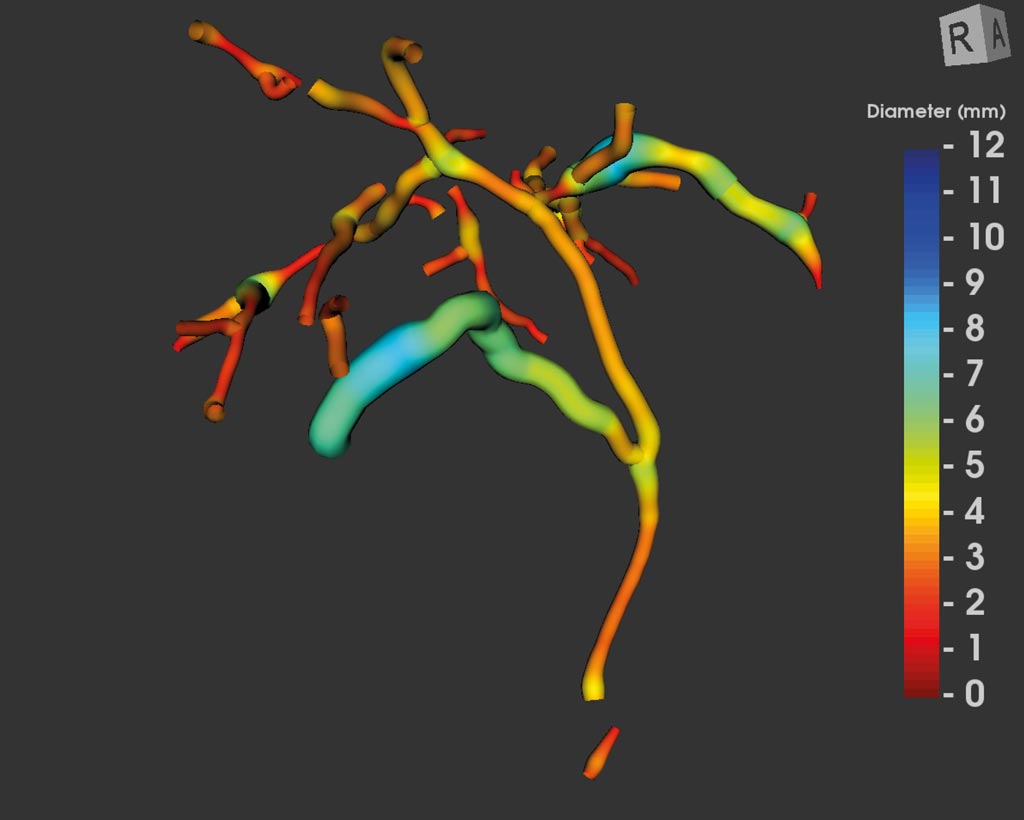MRI Diagnostic Tool Digitally Images Biliary Tree and Ducts
By MedImaging International staff writers
Posted on 07 Feb 2019
Advanced magnetic resonance cholangiopancreatography (MRCP) imaging software visualizes intra-hepatic ducts and measures bile ducts width and biliary tree and gallbladder volume.Posted on 07 Feb 2019
The Perspectum Diagnostics (Oxford, United Kingdom) MRCP+ quantitative biliary imaging tool uses computational techniques to support the visualization, evaluation and reporting of hepatobiliary structures. The quantitative magnetic resonance imaging (MRI) and artificial intelligence (AI) algorithms are designed to enhance MRCP images by combining image viewing, processing, and reporting tools, which is especially relevant for serial evaluation of primary sclerosing cholangitis (PSC) patients.

Image: MRCP+ imaging of the biliary tree (Photo courtesy of Perspectum Diagnostics).
MRCP+ can process data from all 1.5T and 3T MR scanners that support three-dimensional (3D) MRCP sequences, providing standardized quantitative metrics for the pancreatobiliary system. MRCP+ is also safe, non-invasive, and does not involve the use of contrast media. A typical scan takes less than 15 minutes to complete, with same-day results. Current diagnosis of PSC is hindered by lack of effective biomarkers, and interpretation of conventional MRCPs itself is both qualitative and subject to relatively low inter-operator reliability.
“Perspectum develops quantitative MRI for decision support in a range of diseases in the liver and related organs. MRCP+ is one of the first examples of AI in medical imaging being used to solve unmet needs in hepatobiliary medicine,” said Professor Sir Michael Brady, MD, founder, chairman, and image analysis lead of Perspectum Diagnostics.
“The ability to diagnose and monitor the progression of PSC is needed to help develop new treatments, improve methods for cancer surveillance and allow the early management of symptoms and complications of PSC,” said Martine Walmsley, chair of Trustees for PSC Support (Didcot, United Kingdom). “To this end we welcome the clearance of MRCP+ which will provide additional information for clinicians and researchers, helping address unmet need for patients with PSC.”
PSC is a rare long-term, progressive autoimmune disease of the liver and gallbladder characterized by inflammation and scarring of the bile ducts that drain the gallbladder, impeding the flow of bile to the intestines. Eventually, it can lead to cirrhosis of the liver and liver failure; there is no known cure. The disease was initially described in the mid-1800s but was not fully characterized until the 1970s with the advent of medical imaging techniques such as endoscopic retrograde cholangiopancreatography (ERCP).
Related Links:
Perspectum Diagnostics














